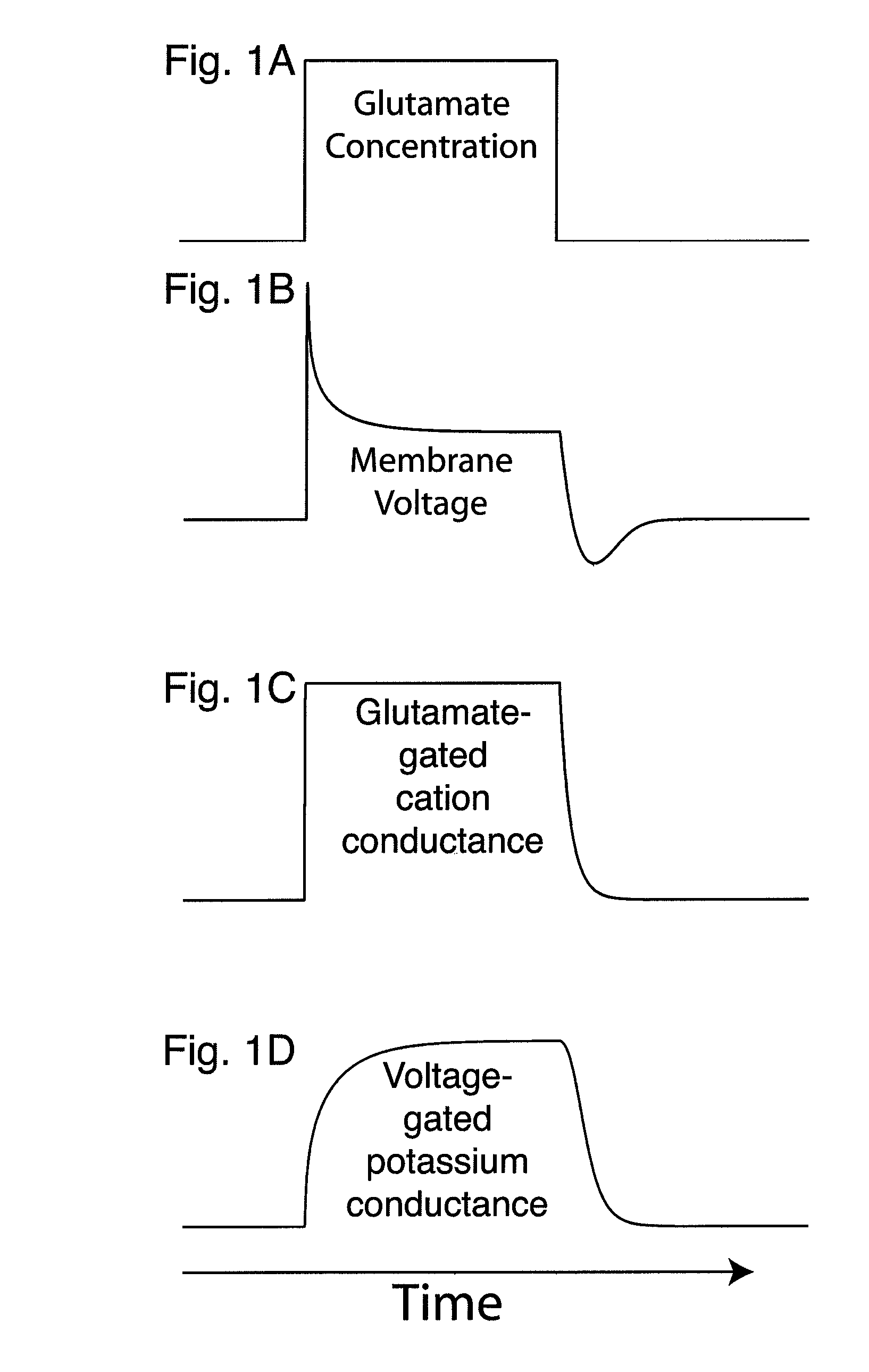Prediction by single neurons
- Summary
- Abstract
- Description
- Claims
- Application Information
AI Technical Summary
Benefits of technology
Problems solved by technology
Method used
Image
Examples
Embodiment Construction
[0027]A biological neuron is described in order to illustrate how the artificial neuron of one embodiment learns to make predictions.
Biophysics and Prediction Error
[0028]A neuron integrates information in the voltage differential across its membrane. A neuron expends energy to maintain a higher concentration of sodium ions on the outside of its membrane, and a higher concentration of potassium ions on the inside. A neuron has pores or channels in its membrane, which differ in the ions that they allow to pass. For example, some ion channels are selective for potassium, and thus when they open, potassium flows down its concentration gradient, exiting the neuron and thereby hyperpolarizing the membrane towards the potassium equilibrium potential, which is usually about −100 mV. Neurons typically have many different types of ion channels, but the simplest neuron that could possibly integrate information in its membrane voltage would have just two types of channels that differ in their i...
PUM
 Login to View More
Login to View More Abstract
Description
Claims
Application Information
 Login to View More
Login to View More - R&D
- Intellectual Property
- Life Sciences
- Materials
- Tech Scout
- Unparalleled Data Quality
- Higher Quality Content
- 60% Fewer Hallucinations
Browse by: Latest US Patents, China's latest patents, Technical Efficacy Thesaurus, Application Domain, Technology Topic, Popular Technical Reports.
© 2025 PatSnap. All rights reserved.Legal|Privacy policy|Modern Slavery Act Transparency Statement|Sitemap|About US| Contact US: help@patsnap.com



